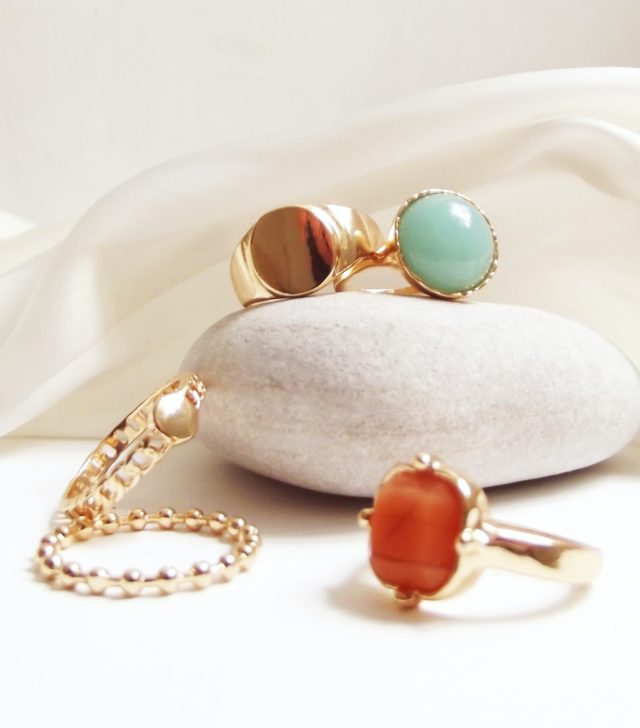Personalize Your Jewelry
Jewelry is one of the most timeless and versatile accessories that have been worn for centuries. It has been used as a form of personal adornment, a status symbol, and even as a talisman for good luck. However, in recent years, jewelry-making has evolved beyond just creating aesthetically pleasing pieces and allowing for personalization. With the rise of DIY culture and custom-made products, people are now looking for unique and personalized jewelry that reflects their personality and style.
Jewelry making for personalization involves using different techniques and materials to create unique pieces tailored to your individuality. The possibilities are endless, from engraving to stamping, from wire wrapping to beading. In this blog, we will explore the different techniques and materials used in jewelry making for personalization, including how to choose the right materials for your project and tips for creating your own customized pieces. Whether you’re a beginner or a seasoned jewelry maker, this blog will give you the inspiration and guidance you need to create personalized jewelry that is truly unique.
Techniques: Soldering, Wire Wrapping
Soldering and wire wrapping are two popular techniques used in jewelry making for personalization. These techniques allow for the creation of intricate and unique designs that cannot be achieved through other methods.
Soldering involves using a heat source to melt a metal alloy, known as solder, and joining two or more pieces of metal together. It is a versatile technique that can be used to create various types of jewelry, from delicate earrings to chunky bracelets. Soldering can be done with a torch or soldering iron, and it requires a steady hand and a lot of practice to master. With soldering, the possibilities are endless, as you can create elaborate designs by connecting multiple pieces of metal with intricate soldering joints.
On the other hand, wire wrapping involves wrapping wire around a piece of metal, such as a gemstone or bead, to create a unique and personalized design. This technique is perfect for creating jewelry that is both delicate and intricate. Wire wrapping requires patience and precision, as it involves manipulating thin wire to create a design that is both secure and aesthetically pleasing. It is also an excellent technique for incorporating a variety of materials into your jewelry designs, such as gemstones, crystals, and beads.
Both soldering and wire wrapping require a certain level of skill and practice, but they offer endless possibilities for creating personalized jewelry that is truly unique. Whether you want to create a statement piece or a delicate and intricate design, these techniques can help you achieve your vision. With the right tools, materials, and guidance, you can experiment with these techniques and create personalized jewelry that reflects your individuality and style.
Materials: Metals, Stones, Beads
Materials are a crucial component in jewelry making for personalization. They provide the base for the design and contribute to the piece’s overall aesthetic and feel. Metals, stones, and beads are three popular materials used in jewelry-making for personalization.
Metals:
Are a common material in jewelry making, and there are a variety of metals to choose from, such as gold, silver, copper, and brass. These metals can be used in their pure form or combined with other metals to create alloys that are more durable or have a different color. The type of metal used in jewelry making can influence the overall style of the piece, with gold giving a more luxurious feel and silver giving a more modern or bohemian feel.
Stones:
Also popular in jewelry making, especially for adding color and texture to a design. There are many types of stones to choose from, ranging from precious stones like diamonds and rubies to semi-precious stones like amethyst and turquoise. Each stone has unique properties and can convey different meanings, such as love, protection, or healing. Stones can be set in metal, wire-wrapped, or used in beaded designs.
Beads:
Beads are a versatile material in jewelry making, and they come in a range of shapes, sizes, and materials. They can be used as a focal point in a design or as an accent to add color or texture. Beads can be made from natural materials, such as wood or bone, or synthetic materials, such as plastic or glass. They can also be combined with other materials, such as metals and stones, to create a unique and personalized design.
In conclusion, the materials used in jewelry making for personalization play a critical role in the design and overall aesthetic of the piece. Whether you choose metals, stones, or beads, the right materials can help you create a unique and personalized piece of jewelry that reflects your individuality and style. With a little creativity and experimentation, you can explore different materials and create truly one-of-a-kind jewelry.
Crafting Tools: Pliers, Cutters
Crafting tools are an essential part of jewelry making for personalization. These tools allow you to manipulate and shape your materials to create the desired design. Here are two popular crafting tools used in jewelry making: pliers and cutters.
Pliers:
Pliers are versatile tools that can be used for a variety of tasks in jewelry making. There are several types of pliers, including chain-nose pliers, round-nose pliers, and flat-nose pliers. Chain-nose pliers have narrow, tapered ends that are perfect for gripping and manipulating small pieces of wire or metal. Round-nose pliers have rounded tips that are used for creating loops and curves in the wire. Flat-nose pliers have flat, wide tips that are used for gripping and bending metal.
Cutters:
Cutters are another essential tool in jewelry making. They cut through wire, metal, and other materials to create the desired shape and size. There are several types of cutters, including side cutters, end cutters, and flush cutters. Side cutters have a diagonal cutting edge that allows you to cut through wire or metal at an angle. End cutters have a flat cutting edge that allows you to cut straight through wire or metal. Flush cutters have a flat cutting edge that cuts the wire or metal flush with the surface, leaving no sharp edges.
These two tools are just a small sample of the various crafting tools available for jewelry making. Each tool has a specific purpose and can help you achieve the desired design. With the right tools and some practice, you can create personalized jewelry that is both unique and beautiful. Investing in quality tools that will last you for years to come and taking care of them properly to ensure their longevity is important. Whether you are a beginner or a seasoned jewelry maker, having the right tools is crucial to your success in creating personalized jewelry.
Design Tips: Colors, Shapes
Colors are an integral part of jewelry making for personalization. Choosing colors based on a piece’s metal, stones, and design will help it stand out. A great way to select colors is to consider what the wearer would like and then contrast that with the metals and stones in the piece. For example, if you have a necklace with gold accents, choose bright colors such as reds or blues that pop against the gold. On the other hand, if a piece has silver accents, softer pastel colors work best to draw attention to those features.
Shapes are equally important when designing personalized jewelry pieces. Consider how each shape complements one other and adds balance to your design. Incorporating geometric shapes such as squares, circles, and triangles can add visual interest to any piece of jewelry by creating patterns within its design. Additionally, curved lines can be used to create graceful designs or even mimic organic shapes found in nature for more intricate designs. Experiment with different sizes of shapes until you find what feels right for your creation!
Finishing Touches: Polishing, Patina
Polishing is an essential part of the jewelry-making process. It involves removing any marks or scratches on the surface of the metal and can be done with various tools, such as buffing wheels and polishing compounds. Different techniques may be used to achieve a matte or high gloss finish depending on the desired finish. Patina is another important finishing touch that can add unique character and dimension to jewelry pieces. This process involves applying chemicals or heat to bring out various colors in metals such as silver, copper, brass, and bronze. The effects will vary from piece to piece depending on how long it’s left on and what other materials are combined. Patinas can range from bright blues to deep browns for a truly one-of-a-kind look that mass-produced items can’t replicate.
Conclusion: Unleash Creativity
Creativity is the key to unlocking your style and creating truly unique jewelry pieces. With the right materials, tools, and techniques, anyone can create one-of-a-kind jewelry that expresses their individual tastes and preferences. From beading and wire wrapping to resin casting and clay sculpting, there are a variety of mediums to choose from when it comes to crafting your own bespoke jewelry. Once you’ve got the basics down, be sure to experiment with more advanced techniques, such as electroforming or enameling, for a truly unique effect. Finally, don’t forget that the possibilities are endless—you can mix different styles to create something completely new. Let your creativity run wild, and you’ll soon have an impressive collection of handcrafted jewelry!






























